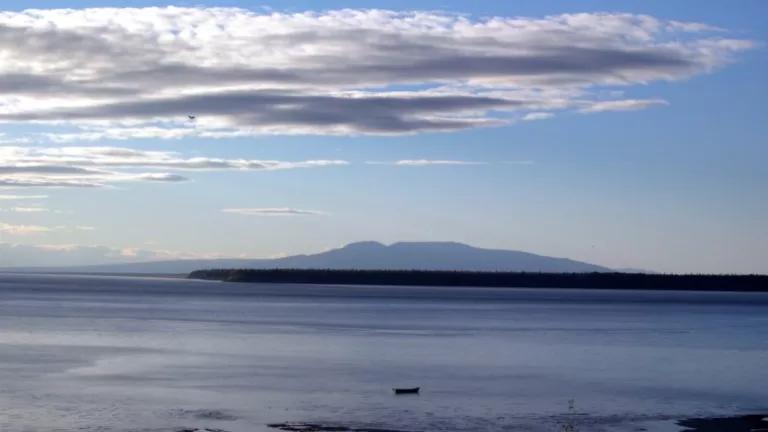In Bears Ears We Trust: Tribally co-managed national monument offers protection and prosperity.

Bears Ears — its twin buttes rise over lush green meadows. The green is as surprising in this remote corner of arid southeastern Utah as the gathering of tribal leaders who stand among it, representing the Navajo, Hopi, Uintah and Ouray Ute, Ute Mountain Ute, and Zuni. Never before have so many tribes set aside their differences and come together to protect a landscape. The five tribes have organized in a formal inter-governmental body called the Bears Ears Inter-Tribal Coalition. Supported by more than 260 tribes nationwide, the Coalition exists to promote a common agenda — designation of 1.9 million acres as the Bears Ears National Monument.
For generations, the federal government has held tribal assets, including land, in trust, required by law to manage them for the benefit of Native Americans. History has obliged tribes to trust the federal government, despite a long track record of broken promises. It's time to think about trust in a new way. It's time for the federal government to trust the tribes.
The Inter-Tribal Coalition's proposal provides for co-management of the Bears Ears monument by a Commission made up of eight members — one from each of the five tribes, plus one from each federal agency that manages land within the monument. This would give tribes a seat at the table and a voice in how their ancestral homelands are managed. The Commission would hire a monument manager and set performance standards for the manager. In the end, the Secretary of the Interior or Agriculture would have ultimate authority.
As proposed, the Bears Ears monument would be bounded by the Colorado and San Juan rivers to the west and the Navajo Reservation to the south. On the east and north, the boundary is marked by low bluffs and high mesas and plateaus from White Mesa up to the Colorado River near Moab, Utah. Ancestors of the tribes that have proposed the monument built civilizations on these lands. But their connections to this place are not just a memory. Bears Ears is still home to sacred resources that continue to be vital to tribal communities across the region as a place of subsistence, spirituality, healing, and contemplation. Today, the proposed monument is made up primarily of lands now held by the Interior Department's Bureau of Land Management, but also Forest Service and National Park Service lands.
The government would not give away the land. The tribes have not asked for it. The lands are federal lands that belong to all of us. Who better to trust with its management than the tribes who have embraced these lands for centuries? As one tribal member has said, "We don't manage land. The land manages us." Under tribal co-management, the American public could expect the same level of conservation — of the land, wildlife, air, water — that federal managers would deliver. Why not include tribal voices in the search for answers when it comes to how best to achieve conservation?
For years, the tribes have had to trust the federal government to look out for their interests. Now, we are looking to the tribes to protect ours. I'm willing to bet that the tribes will do better than the U.S. has done for them.



